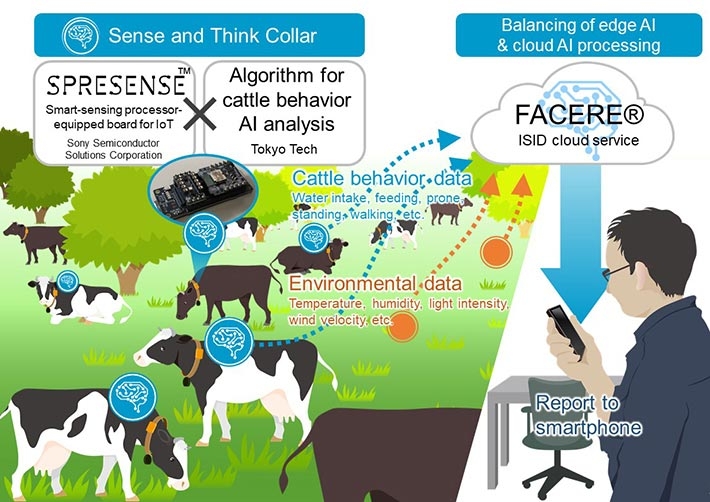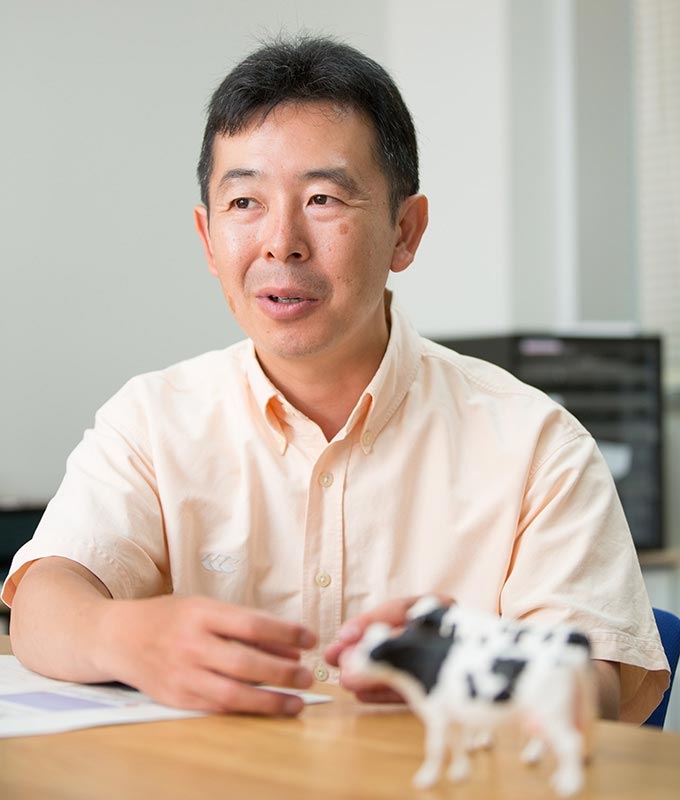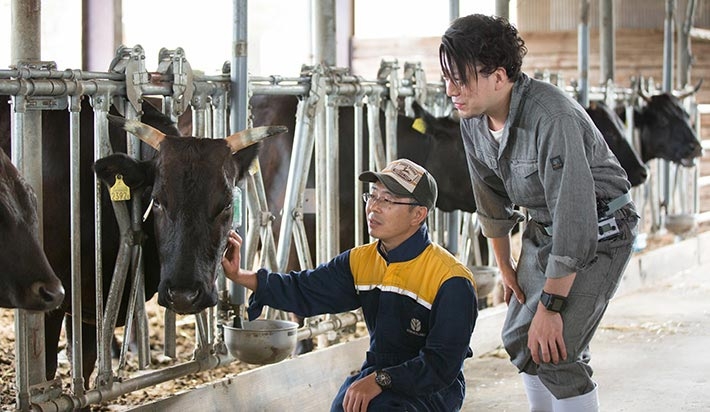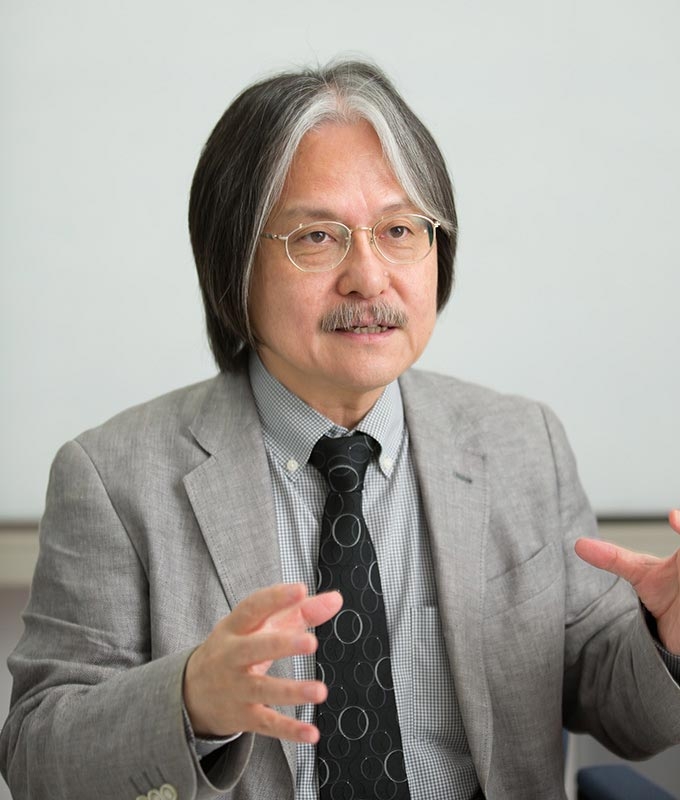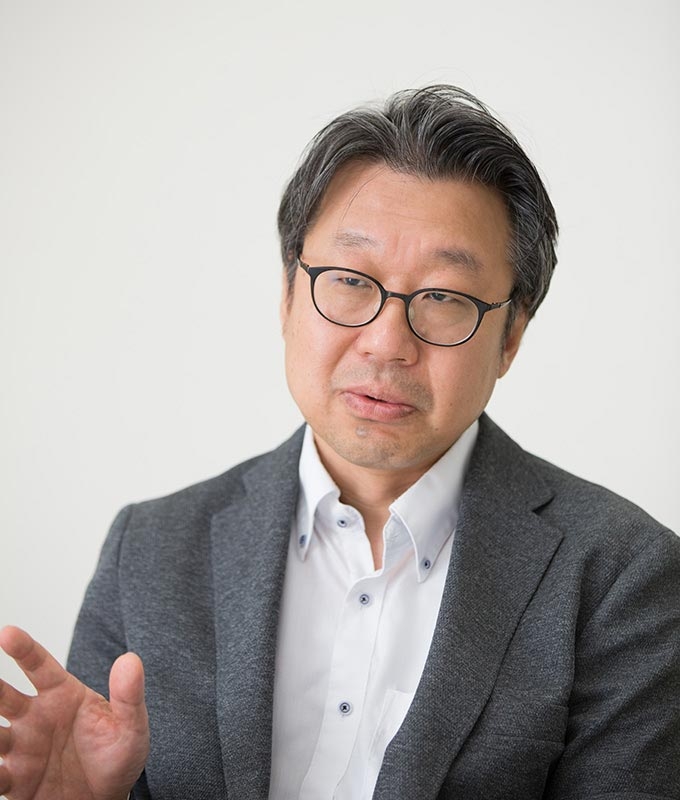
Project Leader Toshiyuki Hiroi, Sony Corporation
Hiroi: Social challenges form the foundation of the project theme, "empathizing with silent voices." Along with advancing economic growth in Asia, food scarcity and environmental destruction have intensified. With Japan's decreasing birthrate and aging population, labor shortages have become increasingly serious in a wide range of industries, including agriculture, civil engineering, and social welfare. In approaching these issues, prevention is a more effective alternative than reacting to problems after they arise. Sensing silent voices in nature and society is key to reducing resource costs, minimizing waste, and increasing efficiency. Such actions will lead to an environmentally friendly and sustainable future society.
Wakabayashi: We are using state-of-the-art technologies such as IoT and AI to sense those silent voices, transform the data into comprehensible information, then transmit the information to people who need it when they need it.
To this end, an IoT edge device that is small, lightweight, and ultra-low power is essential; one with sensors, connectivity functions, and a processor capable of on-site AI processing. For this, we needed a project leader who is an industry specialist. We asked Hiroi-san to be our project leader because of his technical knowledge and skill in processors, as well as his extensive experiences in practical implementation.
Hiroi: For many years I have been involved in LSI development for game devices at Sony. And about 20 years ago I began growing deeply concerned about environmental issues. LSIs were rapidly becoming smaller, lighter, and cheaper, and I started conducting research on long-range wireless systems. During that time, I began thinking that there must be a way to use these technologies to protect the environment. So when Professor Wakabayashi asked me to join the COI project, I accepted immediately.
Wakabayashi: In this COI project, we have been working to develop an IoT edge device capable of detecting and recognizing light, temperature, and movement (acceleration). For the device platform, we are using the SPRESENSETM, a Low-Power, Smart-Sensing Processor-Equipped Board for IoT developed by Project Leader Hiroi and produced by Sony Semiconductor Solutions Corporation. By loading the device with Tokyo Tech's state-of-art AI technology, and replacing the existing sensors with next-generation ultra-sensitive diamond, graphene, or carbon nanotube sensors, which Tokyo Tech is currently developing, we believe we can create a low-energy, yet high-performance IoT edge device.
Hiroi: One of the applications is a cattle behavior monitoring system being developed by Hiroyuki Ito from Tokyo Tech and Kenichi Takeda from Shinshu University. Another is in the concept of "silent voices in group communication" by Tokyo Tech's Yoshihiro Miyake and Takayuki Nozawa.
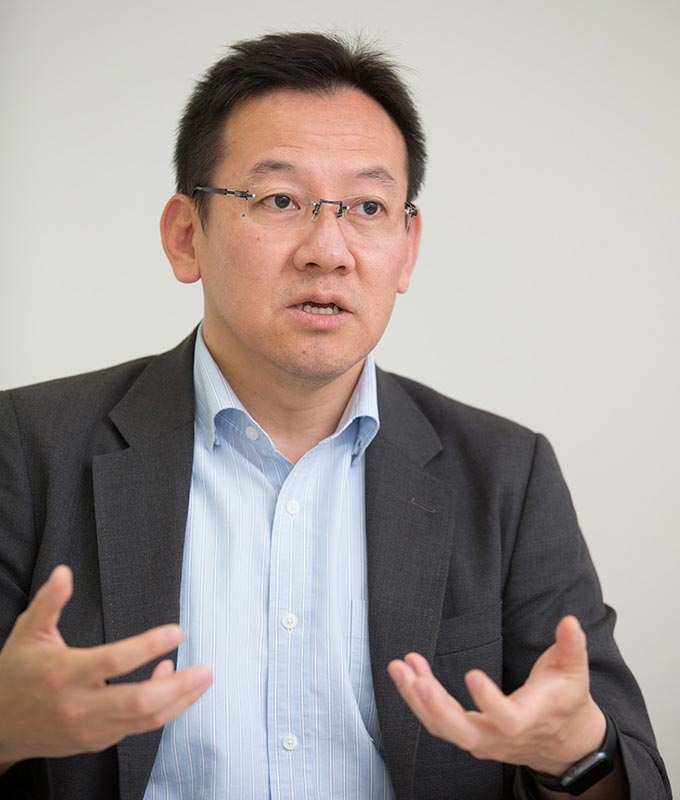
Research Leader Hitoshi Wakabayashi, Tokyo Tech
Wakabayashi: I have been involved in many industry-academia collaborations. But unlike the common practice where project members work in isolation, a wonderful aspect of this COI project is that it gathers specialists from a broad range of fields and allows them to work together in an open environment. I am grateful for this opportunity to collaborate with Sony and other innovative companies and universities.
Hiroi: Professor Wakabayashi has been an advocate of the Open Innovation Consortium concept. I believe this matches the purpose of the COI project quite well. I also think Sony would benefit by pursuing more joint research, not only in entertainment and IT, but also in other areas, like agriculture. While it can be difficult for companies to participate in short-term or unprofitable industry-academia projects, the issues that society is facing cannot be solved by a single company or university. Rather than getting stuck in the development practices of the past, it is important to employ flexible and multifaceted approaches to identify the best solutions. I hope, therefore, to have more people from a variety fields to collaborate with us in the project.
Wakabayashi: I totally agree. Following on-going projects, as the cattle behavior monitoring and group communication systems, I look forward to producing our third and fourth solutions. This COI project will finish at the end of March in 2022; but we are planning to start a consortium that will allow us to continue research and development even through FY2022 and beyond.
Hiroi: It has been about 50 years since the first Intel microprocessor was developed, and performance over that time has increased by a factor of 10 billion. The old supercomputers that once filled rooms can now fit in your pocket. And the internet has grown to connect people around the world. As a result, the things that happen on the other side of the world are no longer other people's problems. I believe this will tie into global coexistence and world peace. This is the reason why I believe IT is the effective way to realize the sustainable future society that the COI project is aiming at. The goal of this COI project is not such that we will see results in one or two years. Therefore, using projects like this as a foundation for an open innovation consortium, I look forward to working as a member of that team towards our vision.
. Any information published on this site will be valid in relation to Science Tokyo.








